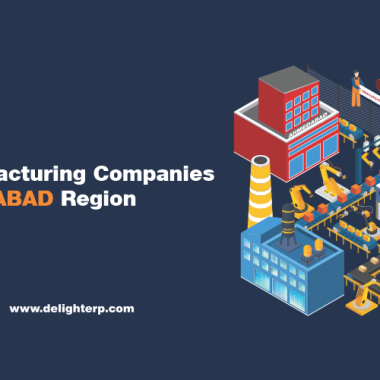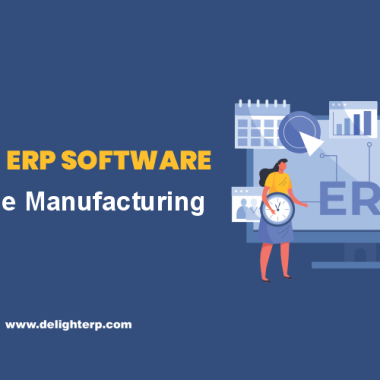Introduction
The manufacturing industry is on the brink of a remarkable transformation, fueled by advanced technology, changing consumer preferences, and a growing emphasis on sustainability.
As 2025 draws near, several interesting trends are poised to completely transform the manufacturing environment. Manufacturers must embrace these new transformations to remain competitive and adaptable in a constantly changing industry.
Recent statistics underscore the urgency of adapting to these changes.
- As per McKinsey: businesses that adopt digital transformation can expect a 20-30% boost in output.
- As per the World Economic Forum: By 2025, IoT and AI will be incorporated into more than 50% of manufacturing
These research results indicate a vital moment for companies: adapting digital tools can stimulate creativity and increase productivity.

Manufacturing Trends in 2025
In this article, we’ll explore 8 key trends redefining the manufacturing landscape in 2025.
The Rise of Smart Factories
Smart factories are changing the way industrial manufacturing companies create products by using advanced technologies like IoT, AI, and automation. These factories provide extremely effective technologies that enable real-time data sharing, speeding up and enhancing the flexibility of the production processes.
Manufacturers can forecast when equipment needs repairs with smart technology, which decreases downtime and boosts reliability.
In these environments, a centralized data management ERP system is crucial. It helps teams in manufacturing collaborate more effectively, provides up-to-date insights for quick decision-making, and improves resource utilization. All of this results in increased output and more efficient processes.
Supply Chain Resilience and Disruption Management
The COVID-19 outbreak revealed difficulties in international supply chains. As a result, manufacturers are now concentrating on strengthening their supply networks to better withstand unforeseen disruptions caused by natural disasters, geopolitical conflicts, or upcoming pandemics.
This involves handling inventories carefully, diversifying the supply base, and looking into reshoring or nearshoring as the solution.
ERP Software’s Real-time insights contribute to the robustness of the supply chain. As a result, industrial manufacturing businesses are better equipped to anticipate demand, interact with suppliers, and react promptly to any delays. In the end, this strategy boosts productivity and aids manufacturers in remaining competitive in a world that is changing.
Sustainability and Circular Economy
As consumers become more aware of environmental issues, manufacturers are making sustainability a top priority. We will anticipate a significant change in 2025 towards environmentally responsible behaviours, such as reducing waste, saving energy, and implementing the circular economy.
Reusing materials, recycling goods, and creating long-lasting designs are the main priorities for manufacturing companies. This benefits the environment and creates new commercial prospects.
ERP systems assist manufacturers in efficiently managing resources, which in turn supports these sustainability initiatives. Greener and more efficient operations result from their improved recycling, waste reduction, and material tracking.
Industry 4.0 and Digital Transformation
Industry 4.0 is changing the manufacturing world by using advanced technologies like cloud computing, data analytics, and augmented reality. With the use of real-time data, these solutions assist manufacturing companies in improving their operations and making more informed decisions.
Cloud computing gives simple access to information, while data analytics provides insights that better procedures. industry 4.0 can help enterprises remain competitive in a market that is changing quickly.
ERP Systems, which centralise all data, are essential to this transition. Manufacturing teams can now easily access information, work together productively, and make informed decisions. ERP helps manufacturers stay competitive by reducing errors and saving time through process optimisation.
Talent Acquisition and Upskilling
In 2024, the manufacturing industry will face a growing skills gap, especially in technology and digital tools. To tackle this issue, manufacturers need to focus on hiring the right talent and creating strong training programs. Investing in workforce development will help industrial manufacturing companies boost innovation and growth, keeping them competitive in a fast-changing environment.
Working together with schools and training centres can also help close the gap between what the industry needs and the skills available.
Using an integrated ERP system can help streamline training efforts and provide useful insights, making it easier to enhance employee skills and align them with business goals.
Customization and Personalization
Customization and personalization will be major manufacturing trends in 2025 as consumers demand more tailored products. Manufacturers should use cutting-edge technologies and flexible production techniques to accommodate this demand by enabling faster design and specification modifications.
In addition to increasing client satisfaction, this strategy fosters brand loyalty. In a cluttered industry, businesses that succeed at providing personalization products can stand out and attract more customers
Implementing a system that connects various departments can simplify the customization process, ensuring accurate order management and effective use of resources to meet specific customer needs.
Data Analytics and Predictive Maintenance
In 2024, data analytics and predictive maintenance will change the manufacturing industry by allowing companies to use data from machines and sensors. This technology lowers costs and downtime for manufacturers by helping in forecasting equipment failures and improving maintenance planning.
Drones will inspect production lines and provide real-time inventory and machine health reports as factories become increasingly automated.
A good management system can bring together data from different areas like production and finance. This integration allows for real-time monitoring and can automate alerts for maintenance, helping companies improve productivity and respond quickly to any issues.
Cybersecurity
In 2025, There will be increased cybersecurity concerns due to the increasing digitalisation of manufacturing. In order to safeguard confidential data and avoid interruptions, manufacturers must make significant investments in cybersecurity solutions. Smart technology dependence and increased connectivity contribute to vulnerabilities that can result in expensive delays and data breaches.
Building strong security procedures is essential to preserving consumer confidence and safeguarding intellectual property. Because human error can result in serious dangers, employees must receive ongoing training on cybersecurity best practices.
AI and other cutting-edge technology can also be used to detect risks. Industrial manufacturing businesses can improve their operations and protect their assets by investing in cybersecurity.
Conclusion
As we approach 2025, the manufacturing industry is poised for an exciting transformation fueled by cutting-edge technology, sustainability, and shifting consumer demands.
Embracing trends like smart factories and personalized production not only boost efficiency but also sparks innovation, allowing manufacturers to thrive while positively impacting the environment.
In this dynamic landscape, investing in talent and strong cybersecurity is crucial for success. By prioritizing employee training and harnessing advanced technologies, companies can turn challenges into opportunities, paving the way for a vibrant and resilient future in manufacturing.
The journey ahead is not just about adapting—it’s about leading the way into a new era of possibilities!





